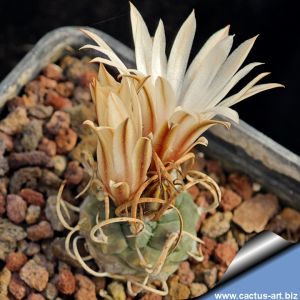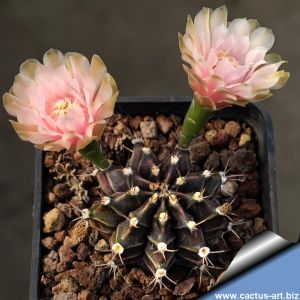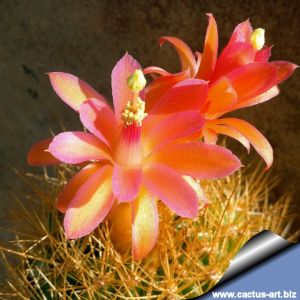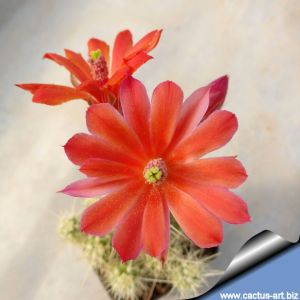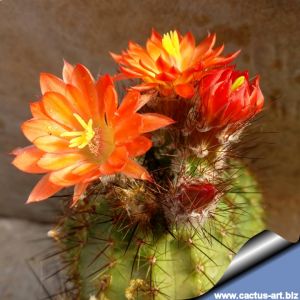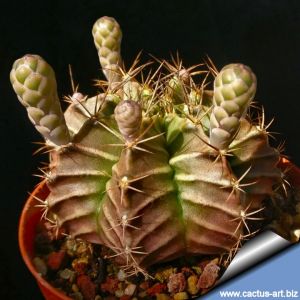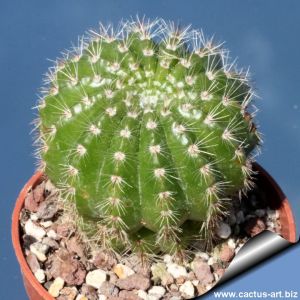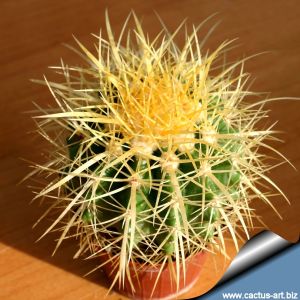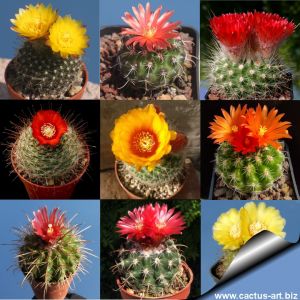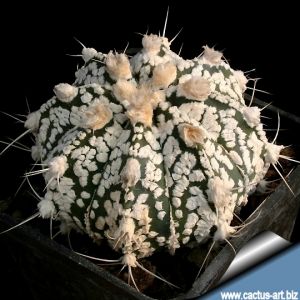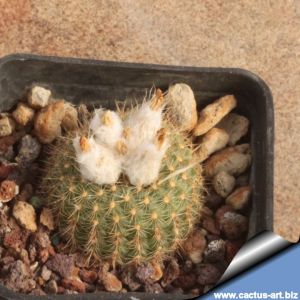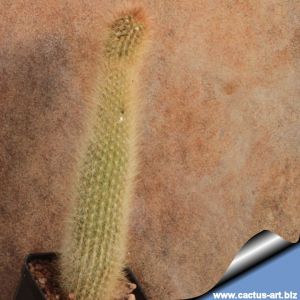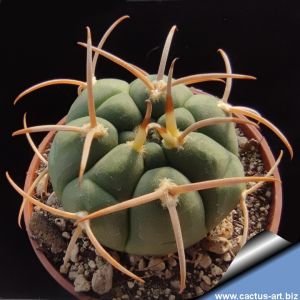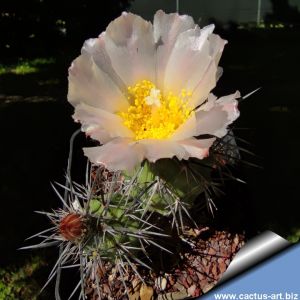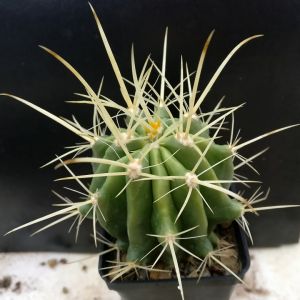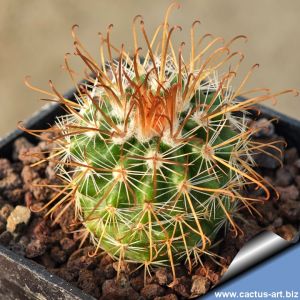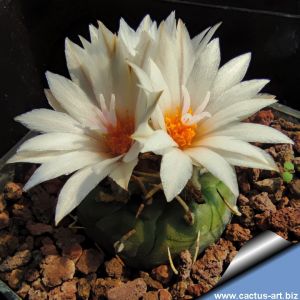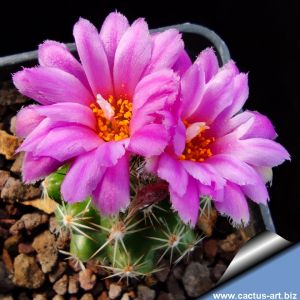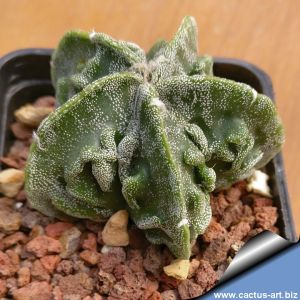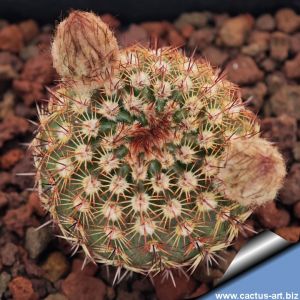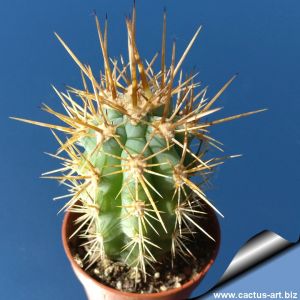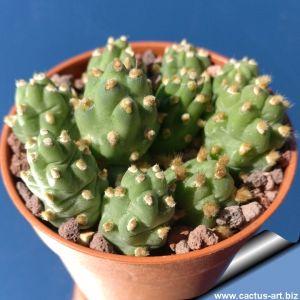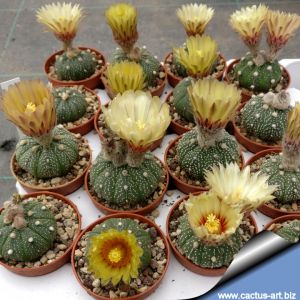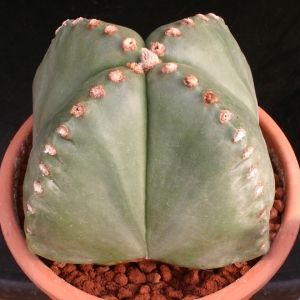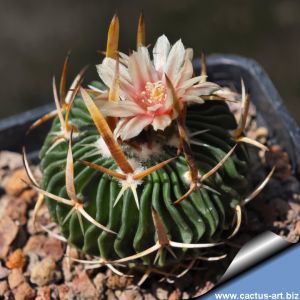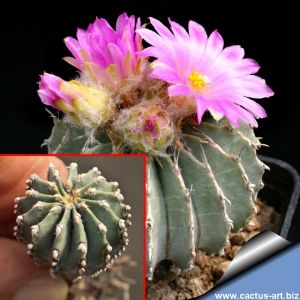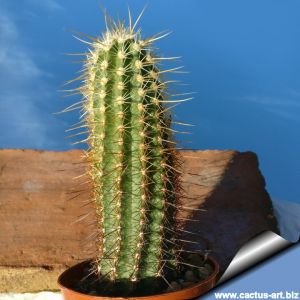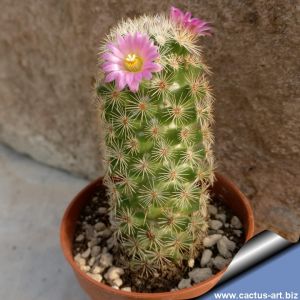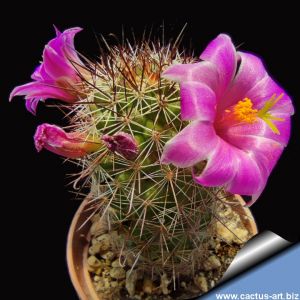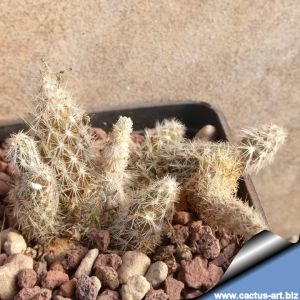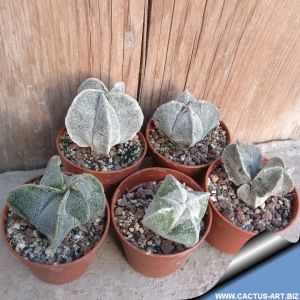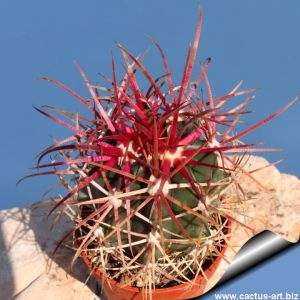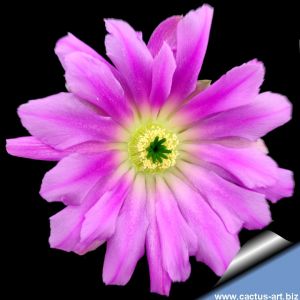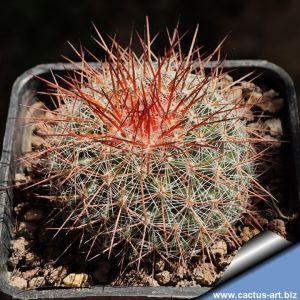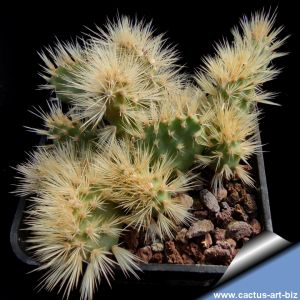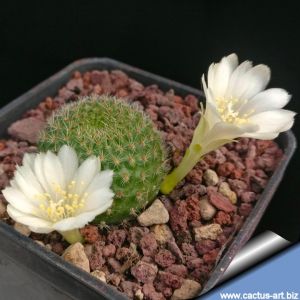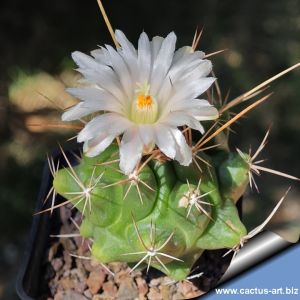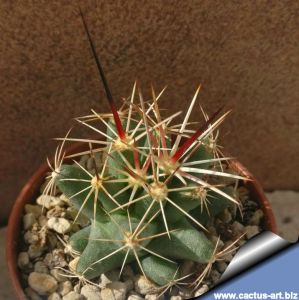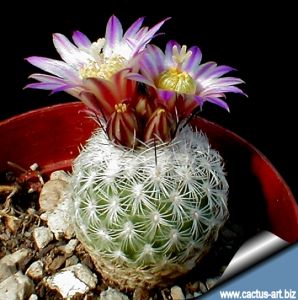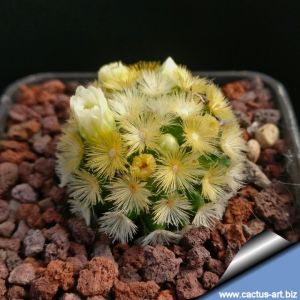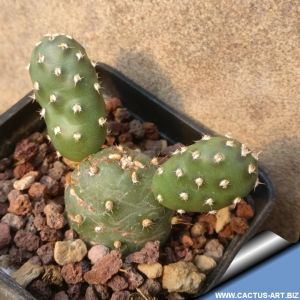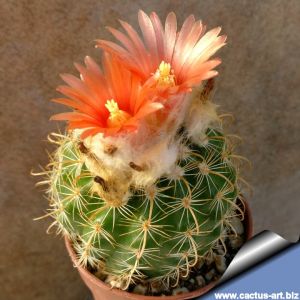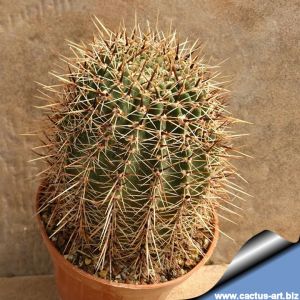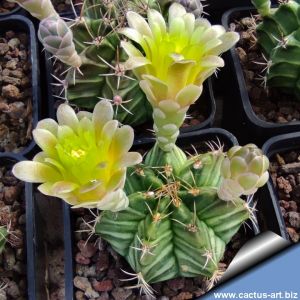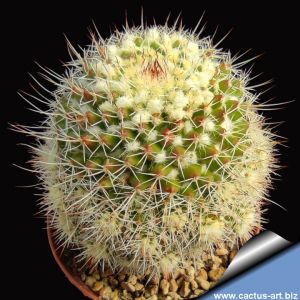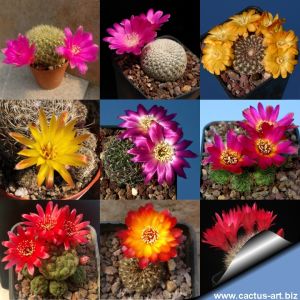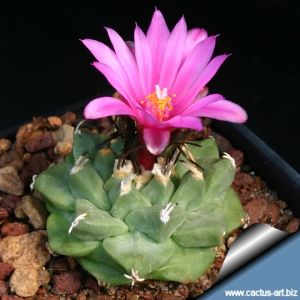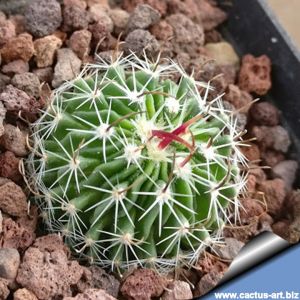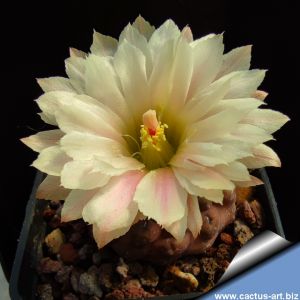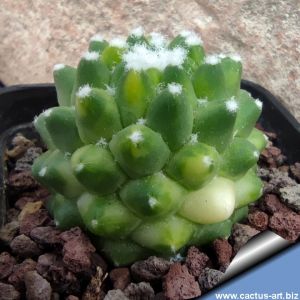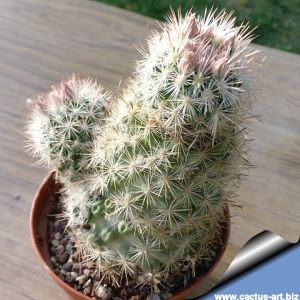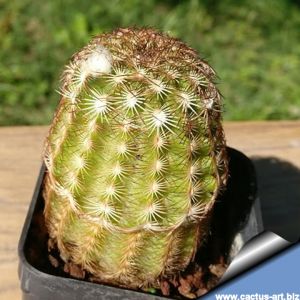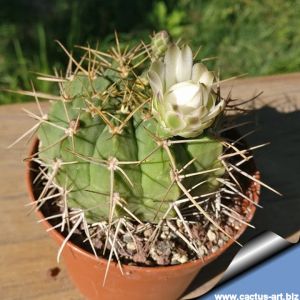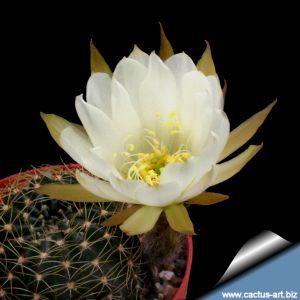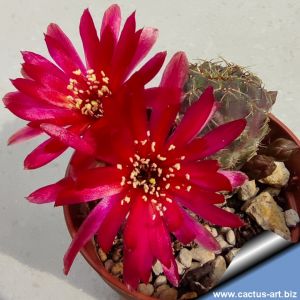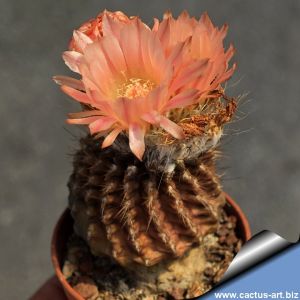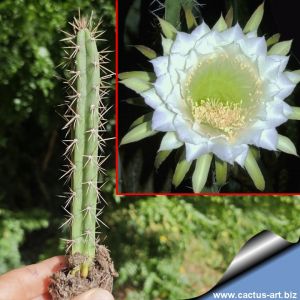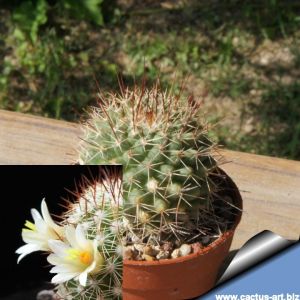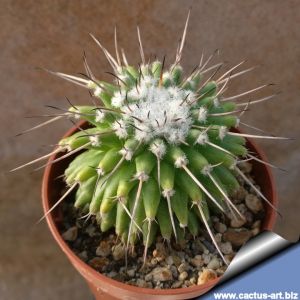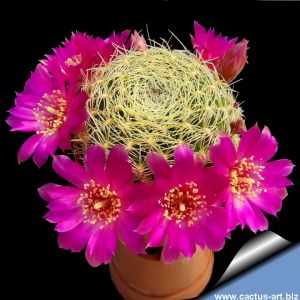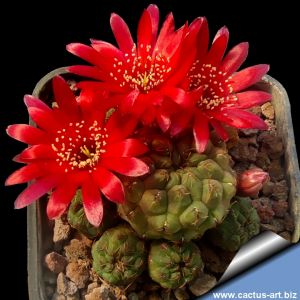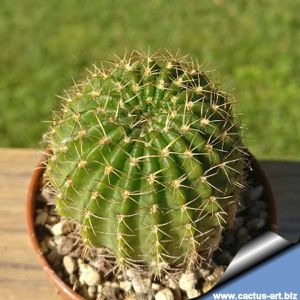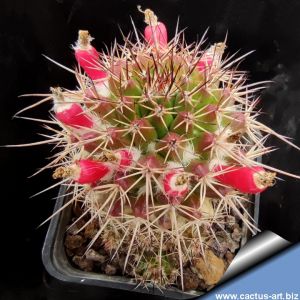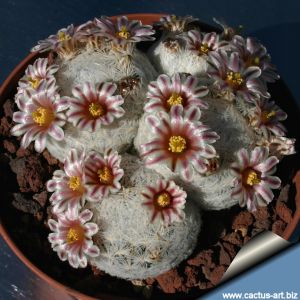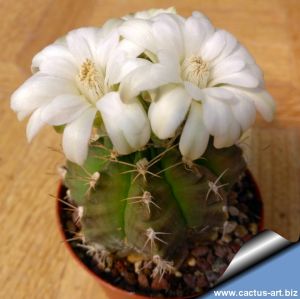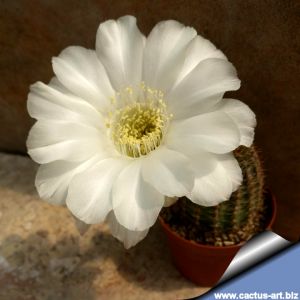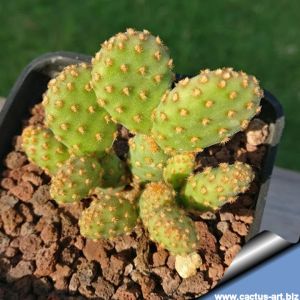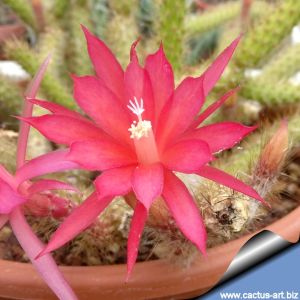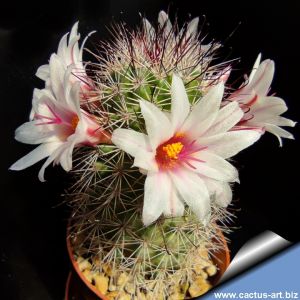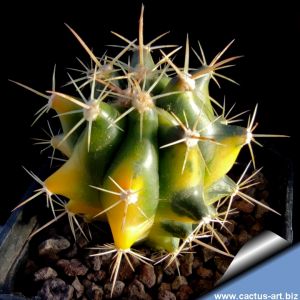-
1
T. klinkerianus stands out for its pyramid-shaped tubercles and short spines (just 3 per areole), which have a soft, corky texture and transverse fissures—typically reduced to one in adult plants. Its ivory-white flowers display subtle magenta veining.
-
2
Hybrids with gray-green to olive ribs (occasionally brownish or purple-tinged) and pale transverse bands. Flowers range from greenish-white to deep pink, with intermediate shades.
-
3
Matucana currundayensis is a local form of the widespread and variable Matucana aurantiaca found in the Cerro Currunday, La Libertad, Peru (hence the name). The stems are globular about 10 cm in diameter light green. The spines are yellowhis to orangish.
-
4
-
5
Showy flowers ranging from orange to pink.
-
6
Striking grey and brown banding on a matte olive-green stem. Charming yellowish-green blooms.
-
7
-
8
-
9
Mix of Parodias, featuring various species, hybrids, and seed-grown cultivars. Each plant is one-of-a-kind, with unique shapes, spination, and flower colors.
-
10
Hybrid A. asterias 'Superkabuto' x A. capricorne. This hybrid inherited large white spots from “Superkabuto”.The ribs are also noticeably raised, clearly indicating kinship with A. capricorne. The flower are also very beautiful.
-
11
-
12
Charming trailing plants with a decumbent growth form, ideal for hanging baskets. Long stems covered in dense, fine, hairy spines ranging from beige to ochre, and adorned with a striking S-shaped reddish bloom!
-
13
Globose-flattened stem in blue-grey green, bearing a taproot and 3 to 5 stout, curved spines.
-
14
Tephrocactus alexanderi is a small cactus with spherical or egg-shaped branches, covered with stiff spines and readily detached. The flowers are large pinkish-white.
-
15
Rare form with light creamy white spines instead of red. The color of the new spines can tend to pink or yellow but then the spines lighten as they mature.
-
16
A stunning Parodia featuring thick, densely packed, hook-shaped spines in warm tones of gold, amber, or brown.
-
17
-
18
Tiny, often making clusters in age, white-grey to light brownish spines, many pink flowers! Highly recommendable species!
-
19
"Fukuryu Rampowgyoku". FUKURYU is a Japanese word that would mean presence of additional ribs. It forms small extra ribs, usually these additional ribs have not areoles and develops on the lateral side sandwiched between two contiguous true ribs.
-
20
Small-growing cactus with numerous stiff, sharp spines, varicoloured and the centrals reddish-brown. The flowers are very showy, with much white wool along the tubes, and translucent petals, salmon to carmine-red shading to egg-yolk yellow in the centre.
-
21
Azureocereus hertlingianus (Browningia hertlingiana) also known as the “Blue Cereus” is a huge columnar cactus sought after by collectors because the juvenile specimens have a beautiful blue frosty covering. It one of the few really blue cacti.
-
22
-
23
-
24
-
25
Numerous wavy ribs topped with long, sturdy central spines. Flowers feature pale, pearly petals, each marked by a central stripe and a soft pink throat, creating a delicate, luminous effect.
-
26
A strongly ribbed cactus of unique appearance and extremely slow growth. Stem dark grey-green to brownish, covered in a glaucous grey pruina, globose up to 10 cm in diameter, with a woolly apex. Day-blooming flowers range from deep pink to magenta.
-
27
Long yellowish spines, magenta flowers.
-
28
Fingerlike body covered in short white spines, huge tuber. Nice pink flowers in ring near top.
-
29
Mammillaria occidentalis also known as Mammillaria mazatlanensis var. occidentalis is a clumping species which has large pink flowers in summer. The flowers are 1 cm long and are slightly scented. These can be followed by red fruits.
-
30
-
31
-
32
A highly ornamental colorful barrel cactus bearing intense red blooms and yellow fruits. Features stout reddish central spines tipped yellow or brown, contrasted by thin pale radial spines. New spines emerge in a brilliant red shade.
-
33
-
34
-
35
Mammillaria sinforosensis var. marionae features white radial spines, central spines in reddish-orange or light brown, and soft white wool filling the spaces between tubercles.
-
36
-
37
-
38
Thelocactus tulensis is a globular and strongly tubercled cactus with larger white to pink flowers. The spines are straw coloured up to 7 cm long, evenly distributed on the stem, straight to twisted and flattened.
-
39
-
40
Gracefully elongated in shape, featuring radial white spines and dark central spines. Its flowers range from pale butter-yellow to rich pink, offering a beautiful color gradient.
-
41
Tight yellow feathery spines.
-
42
Compact species forming low clumps of small elliptical or nearly spherical segments in dark green or blue-green, adorned with brown woolly areoles and fine yellow or reddish radial spines. Produces large yellow flowers in spring and summer.
-
43
-
44
-
45
This plant’s most unique haracteristic is its colourful body ( greyish-green to browish-purple with white and red highlights). The flowers have a silky appearance and range from pale green to brownish-yellow.
-
46
Mammillaria nejapensis cv. multiprolifera produces in a short time thousands of tiny, tightly pached stems all around its base.
-
47
A captivating mix of Sulcorebutia, featuring various species, hybrids, and seed-grown cultivars. Each plant is one-of-a-kind, with unique shapes, spination, and flower colors.
-
48
Turbinicarpus alonsoi is a small cactus with a large tap-root, and only the apical part of the stem exposed at soil level. The spines are flattened, cardboard-like, grey with dark tip, irregularly bent inwards, frequently weathered, not piercing.
-
49
-
50
-
51
# # # SPECIAL PLANT # # # (Selected specimen)
H 4 cm. Seed grown. Only this one available.
-
52
-
53
-
54
-
55
-
56
Red to purple flowere with often a paler center.
-
57
Curious clone of Eriosyce prized for its prolific basal pups - rare in this genus. Olive-to-brown stems sport tiny straight spines. The real marvel? Oversized pink blooms, like silk parasols shielding the spiny body.
-
58
Harrisia bonplandii, the Midnight Lady, produces nocturnal flowers up to 22 cm long. Blooming only at night, it earns its Spanish name Reina de la Noche
(Queen of the Night).
-
59
Mammillaria multidigitata is endemic to San Pedro Nolasco Island in Mexico, where it growson steep slopes. From spring to early summer it sprouts white to cream colored flowers with yellow-green stigma and orange pollen.
-
60
Mammillaria sempervivi f. montruosa is distinguished by the single long central thorn in each areole. It clumps flat with ground. The white wool between the areoles makes this species a pleasure to look at and grow.
-
61
Beautiful cactus with small branching stems entirely covered in dense, appressed white spines that completely hide the body. It produces striking bright-magenta flowers.
-
62
Stem dark gray-green, purple tints enhanced in full sun; covered in tubercles with short fishbone-arranged spines. Basal flowers appear at soil level in deep red to pink-purple shades.
-
63
-
64
ammillaria collinsii features white flowers with pink mid-veins, a central spine, and 7 radial spines. Stems grow to 16 cm tall and 9 cm wide, branching from the base to form clumps up to 40 cm in diameter.
-
65
Mammillaria lasiacantha is a tiny, usually unbranched or slowly clustering cactus, deep-seated in substrate and inconspicuous. Adults of M. lasiacantha usually have glabrous spines, but some plants may retain plumose spines at maturity.
-
66
-
67
Large pink flowers, five very broad ribs, and strong yellow spines. It clumps readily and grows quickly.
-
68
-
69
-
70
-
71
-
72
# # # SPECIAL PLANT # # # (Selected specimen).
Diameter 4.5 cm, h. 5 cm.

